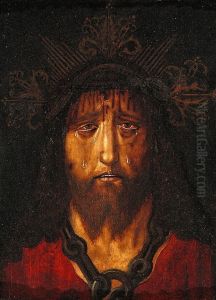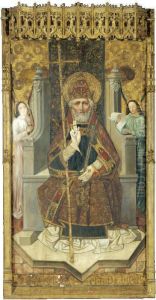Bartolome Cardenas De Bermejo Paintings
Bartolomé Cardenas De Bermejo, also known as Bartolomé Bermejo, was a Spanish painter who is considered one of the most fascinating and enigmatic artists of the 15th century. Born around 1440, Bermejo is renowned for his detailed and expressive works that blend the Northern European style of painting with the Italian Renaissance's innovations, creating a unique approach that set his work apart from his contemporaries in Spain. Despite the limited information on his early life and training, Bermejo's artwork suggests that he had a profound understanding of the techniques and artistic trends of his time, possibly through travels or interactions with artists from other regions.
Bermejo's career is documented through his remarkable works more than through historical records. Among his most celebrated paintings is the 'Pietà', showcasing his skill in using oil paint, a medium then innovative in Spain, borrowed from Northern European practices. This work, among others, displays his mastery over texture, light, and detail, particularly in the rendering of fabrics and reflections, which became a hallmark of his style. His ability to portray religious subjects with both emotional depth and technical precision garnered him commissions from various religious institutions and patrons.
Significantly, Bermejo's life and career were marked by his status as a converso (a Jew who had converted to Christianity), which affected his personal and professional life in a period when Spain was increasingly intolerant of religious minorities. Despite this, he successfully worked in several Catalan cities, including Barcelona, where he completed some of his most important works. His 'Saint Michael Triumphs over the Devil', housed in the National Gallery, London, is particularly notable for its intricate detail and symbolic complexity, reflecting Bermejo's deep engagement with theological themes.
Bermejo's influence extended beyond his lifetime, contributing to the development of Spanish painting and heralding the arrival of the Renaissance in Spain. His work is characterized by a distinctive blend of realism and mysticism, with a keen attention to human emotion and a vibrant use of color that would inspire future generations of Spanish artists. Despite the scarcity of biographical details, Bermejo's surviving works provide insight into his artistic genius and the cultural and historical context of late 15th-century Spain. He is believed to have died around 1501, leaving behind a legacy that secures his place among the great masters of the Spanish Renaissance.

